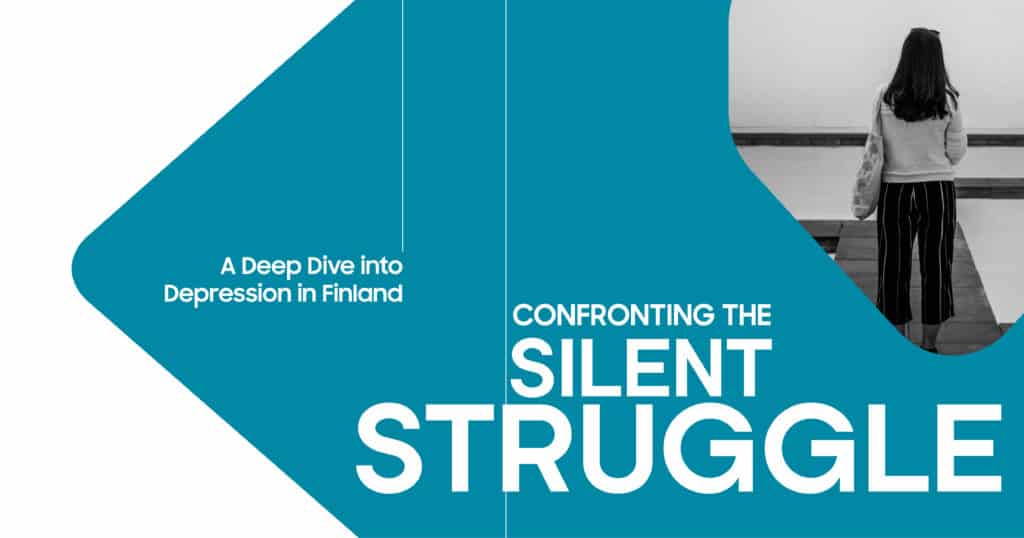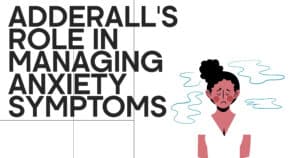Finland often ranks at the top of global happiness indexes. Its serene nature, low crime, and social services paint a cheerful image. But beneath the surface, there’s a lesser-discussed reality: a portion of its people quietly battle depression symptoms, and many never speak up.
Now, you might assume a happy place means happy people, right? But that’s not always how it plays out. In fact, the country with the highest rate of depression is actually the United States. With rising suicide rates and growing demand for mental health support, America ranks higher than even Finland in this troubling category.
Still, Finland faces its own set of mental health challenges. Suicide rates remain above the EU average, and deaths tied to emotional despair aren’t rare. The strange part? In Finland, being depressed often blends into everyday life. It’s subtle. And that subtlety makes it harder to notice, and treat.
So, what can be done? This article takes a closer look at what depression looks like in Finland, what causes it, and how people can begin to cope, or help others cope.
The Prevalence of Depression in Finland
Looking at long-term data, mental illness awareness efforts in Finland have kept things relatively stable over the years. But even with that, nearly one out of five adults in the EU will face some sort of mental health issue, and Finland isn’t exempt.
When we talk about the most common mental struggles here, depression symptoms and anxiety take the top spots. Almost 10% of people are affected.
Here’s something worth knowing, depression in Finland doesn’t just cause emotional pain. It’s a major reason people leave work early or retire on disability. It’s connected to absenteeism, especially in government jobs. And lower education levels seem linked to a higher rate of self-reported depression, especially among the elderly.
Cultural and Societal Influences on Mental Health
Culture really shapes how people think about their mental health. In Finland, values like independence, emotional control, and quiet strength are widely respected. But sometimes, those values can make it harder to reach out for help when someone is mentally struggling.
Let’s break down a few specific cultural and environmental factors that add weight to mental health burdens.
Climatic Influences
Finland has long winters. Less sunlight can throw off your mood and lead to something called Seasonal Affective Disorder (SAD). People feel more tired, irritated, and isolated. They sleep more or less. They just don’t feel like themselves.
Socio-Economic Strains
Living alone is becoming more common in Finland, and with that comes loneliness. Add in job stress, economic pressure, and social expectations, and you’ve got a recipe for mental health issues. People under these pressures often don’t realize how close they are to a depressive episode.
Cultural Factors
You’ve probably heard the word “Sisu” a Finnish term that celebrates grit and resilience. It’s a beautiful concept, but it also encourages silence. People might avoid asking for help to avoid seeming weak. They think pushing through alone is what they’re supposed to do.
This belief system, while admirable, can create stigma. It can make people feel ashamed of seeking counseling services, even when they truly need them.
Identifying Symptoms and Early Warning Signs
Depression symptoms don’t always scream for attention. Sometimes, it’s easy to mistake them for just having a bad week. But when these signs stick around, it’s time to pay attention.
Here are a few red flags to watch for:
- A complete lack of interest in things that once brought joy, hobbies, relationships, and even physical intimacy.
- Feeling like things will never improve. A deep, heavy sense of hopelessness.
- Strange sleep patterns. Can’t fall asleep, or wake up too early, or sleep way too much.
- Appetite changes, including not feeling hungry. Losing weight without trying
- Intense self-criticism. Feeling like you’re worthless, even when there’s no real reason.
- Total lack of energy. It’s hard to even get out of bed, let alone face the day.
- Reckless behavior. This includes drug use, binge drinking, or risky activities that seem out of character.
You can look at these signs in a few ways: emotionally, behaviorally, and cognitively:
| Emotional Changes | Behavioral Changes | Thought Changes |
| Persistent sadness or emptiness | Appetite shifts | Suicidal thoughts |
| Guilt, shame, or worthlessness | Sleep issues | Pessimism |
| Irritability or frustration | Social withdrawal | Harsh self-judgment |
| Feeling numb or emotionally detached | Agitation or low energy | Trouble concentrating or making sense |
Challenges in Accessing Mental Health Services
So let’s say someone in Finland decides, “Okay, I need help.” That’s great, but unfortunately, finding the right kind of mental health support isn’t always easy.
There are some major roadblocks:
- Money Matters: For lower-income families, therapy or medication might be too expensive. Out-of-pocket costs are still common.
- Stigma: People worry they’ll be labeled or judged for needing help. So they keep quiet.
- Language Gaps: Immigrants or minorities may struggle to find therapists who understand their language or culture, making therapy options feel distant or unhelpful.
- Tech Troubles: Many counseling services are now digital. That’s great, unless you don’t have internet access or know how to use the system. Some older or rural populations just get left out.
The Role of Education and Awareness in Combating Stigma
Changing how people think about mental health starts with mental illness awareness. You can’t fix what people don’t understand, right?
Education isn’t just about knowing what depression is, it’s about knowing that getting help is okay. That it’s normal, and others go through it too.
Some of the most powerful ways to build awareness include:
- School programs that talk openly about emotions and stress.
- Workplace sessions that teach empathy and encourage open conversation.
- Sharing real, lived experiences from people who’ve gone through it and made it through the other side.
Let’s break this down a little more:
| Awareness Types | Aim |
| Psychoeducation | Offers the right info, builds empathy, and clears up misconceptions |
| Contact-based learning | Real people sharing stories, this helps others see mental illness as human, not distant |
| Role playing | Practicing emotional scenarios helps people understand mental challenges from a new angle |
Why does this work? Because it’s harder to judge something once you understand it, and harder to ignore it once you see it in someone you care about.
Support Systems and Strategies for Coping
Let’s be honest, life isn’t easy. It’s stressful. And stress, if you don’t manage it well, can lead right into a depressive spiral. That’s why stress management techniques are so essential.
Here’s what actually helps:
- Mindfulness: This doesn’t have to be complicated. It could be breathing slowly for a minute, doing yoga, or even just sitting still without a phone buzzing next to you. These moments matter.
- Healthier living: Eat well. Sleep enough. Exercise, even a little. These basics have a real effect on your brain and emotions.
- Self-care isn’t selfish: Take breaks. Watch your favorite movie. Journal. Get outside. These aren’t luxuries, they’re protective.
- Reach out: Talk to someone. Whether it’s a friend, a therapist, or a support group, there’s no need to carry the weight alone. You’re not meant to.
- Control what you can: You won’t fix everything in a day, but you can make a to-do list. You can choose one small thing to get done today. Focus there. That’s progress.
And don’t forget to celebrate little wins. Got out of bed today? That’s a win. Cooked something healthy? Another one. It builds.
Government and Community Initiatives in Mental Health Promotion
The government has realized that solving mental health challenges means addressing the root causes: poverty, unequal opportunity, and social isolation. It’s a long game, but one worth playing.
Here’s a look at what’s been put in place:
Government Initiatives
- National Mental Health Strategy and Suicide Prevention Plan: These set the tone. They address mental health matters from kids to seniors.
- National Depression Program: Focused on identifying, preventing, and treating depression early, before it becomes life-threatening.
- Community-based focus: Instead of locking people away, Finland now pushes for care within communities. It’s more humane, more supportive, and often more effective.
Community Initiatives
- NGOs stepping up: Nonprofits are running education campaigns, support hotlines, group therapy, and more.
- Local health drives: Municipalities are taking charge, offering easy access to services and building public health roadmaps.
- Collaboration everywhere: Government agencies, local leaders, health workers, they’re working together to make mental wellness a real priority.
The goal? Create a system where anxiety treatment, emotional support, and therapy options aren’t just available, but actually used, without shame.
Ready to Make a Change? Contact California Mental Health Today
You might be reading this and thinking: “Okay, so what now?” Here’s the truth – depression medication, therapy, and support aren’t just buzzwords. They’re lifelines. They make a real difference.
At California Mental Health, we believe everyone deserves to feel heard, supported, and seen. You don’t have to face depression alone, and you don’t have to guess where to turn.
If you or someone you love is struggling, contact California Mental Health today. Send us a message, pick up the phone, whatever works for you. There’s someone here ready to listen and help you figure out what comes next.
FAQs
What are common depression symptoms, and how can recognizing them early help in mental health support?
Some common signs are ongoing sadness, exhaustion, loss of appetite, low motivation, and even suicidal thinking. When you catch these signs early, it’s easier to get the mental health support needed before things get worse.
How does anxiety treatment differ from other therapy options for mental health issues?
Anxiety treatment tends to focus more on coping with fear, tension, or nervousness. Therapies like CBT or exposure therapy aim to help you manage triggers directly, whereas other treatments may focus more on mood, trauma, or behavior.
What role does depression medication play in managing mental illness awareness and recovery?
Depression medications aren’t magic, but they can make a big difference, helping with mood, sleep, and energy. They don’t replace therapy, but sometimes they’re the thing that helps someone finally move forward.
How can stress management techniques complement counseling services for better mental health outcomes?
Stress management techniques can help you stay steady when things feel overwhelming. Pair them with therapy, and you’ve got both insight into what’s going on and practical ways to cope with it, one day at a time.
Are there specific therapy options available for those seeking comprehensive support for depression and anxiety?
Not every approach works for everyone. Some benefit from CBT, others from mindfulness-based methods, or creative outlets. What matters most is trying different options until you find what genuinely helps you.




